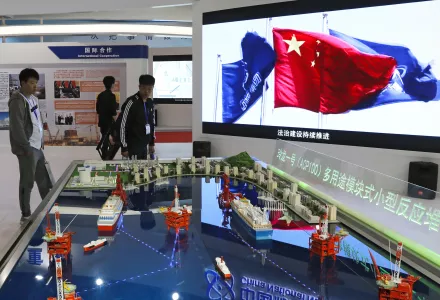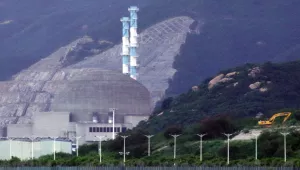
Whereas most of the nuclear power plants (NPPs) that have been built since the 1950s are land-based, in the maritime environment nuclear energy has been mainly used for propulsion purpose in nuclear-powered submarines, aircraft carriers, or icebreakers. The first floating electricity-generating reactor was built by the United States (U.S.) in the late 1960s using a MH-1A reactor of 45 MW thermal (MWt) and 10 MW electric (MWe) capacity, but noticeable interest in floating NPPs only surfaced in the 2000s when the Russian government announced the plan to construct its first floating NPP – the Akademik Lomonosov using two 150-MWt (38.5 MWe) KLT-40S pressurized reactors at an estimated cost of $170 million. Due to financial and technical issues, the Akademik Lomonosov was only delivered in 2018 – 8 years behind schedule at a cost about $700 million, or three time the original price tag.
Besides Russia, China has been the most promising candidate to have an operational floating NPP since the country started the construction of its first plant in 2016, which would be followed by up to 20 floating NPPs to be operated in the South China Sea once the demonstration unit is completed and deployed for trials in the Bohai Sea by 2020. However, different from Russia’s deployment of the Akademik Lomonosov to its undisputed waters in the Far East, the islands where the floating NPPs of China will likely be tethered have also been claimed by other states in the region like Vietnam or the Philippines. Accordingly, this article presents an in-depth analysis of the technical and legal issues regarding this ambitious plan by China.
China’s floating nuclear program
Despite initially considering to import floating NPP technology from Russia, in 2016 China announced its first Chinese floating nuclear project using a 200 MWt (60 MWe) ACPR50S reactor designed indigenously by the China General Nuclear Power (CGN), which was followed by a joint-venture led by the main competitor of CGN in the domestic nuclear market – the China National Nuclear Corp. (CNNC) in 2017 based on its own 310 MWt (100 MWe) ACP100S model. Aside from CGN and CNNC, other types of floating NPPs based on fast reactors have also been under research and development in China.
In general, land-based NPPs have several inherent limitations including extensive land requirement, sophisticated infrastructure for connection to the grid, and continuous and high demand for cooling water. Therefore, floating NPPs have long been considered the alternative technological solution for electricity, heating, or water desalination in remote coastal towns and small islands, as they have been designed mostly based on reactors of less than 300 MWe and to be transportable with the use of barge or ship.[1] For example, a floating NPP using an ACPR50 reactor can provide enough electricity for a community of about 100,000 people, or the daily water consumption for at least 60,000 people.
Given such advantages, it came as no surprise when Chinese officials announced that floating NPPs are to be built and deployed to the South China Sea in order to support China’s offshore oil and gas exploration, as well as to sustain the Chinese civilian presence in the Paracel and Spartly Islands in the South China Sea. However, the extreme land scarcity of the China-controlled islands, despite its land reclamation efforts, makes the civilian settlement expansion very unlikely, and thus rends this ambitious plan of up to 20 floating NPPs unjustifiable if only for civil facilities. Instead, by supplying Chinese infrastructures over the South China Sea with electricity and fresh water, these floating NPPs will help solidify China’s military foothold in this contested area, and raise the political and economic cost of any attack made by state or non-state actors against these China-controlled features. The military dimension of China’s intention to deploy floating NPPs to the South China Sea can be observed through the fact that at least one floating NPP project currently under development in China has been partially funded by the People’s Liberation Army. In addition, operational experiences from the deployment of floating NPPs in the South China Sea will be valuable for China’s plan to develop nuclear-powered aircraft carriers.
[1] J.W. Kindt, "Floating nuclear power plants: US and international regulations," Marine Policy 7:2 90-100, 1983.
Nguyen, Viet Phuong. “China's Planned Floating Nuclear Power Facilities in South China Sea: Technical and Political Challenges.” Maritime Issues, November 21, 2018
The full text of this publication is available via Maritime Issues.





